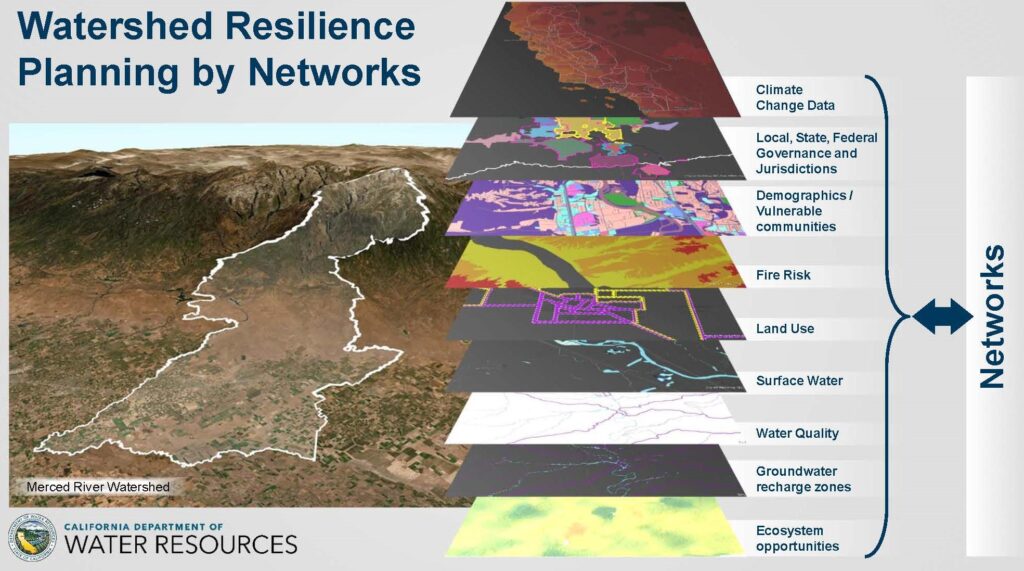
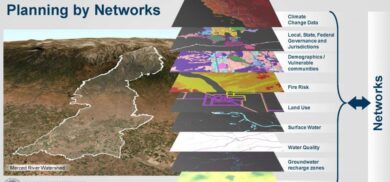 Kamyar Guivetchi is the Manager of DWR’s Division of Planning, where he works with staff, numerous government agencies, California Native American tribes, other stakeholders, and the public to prepare the California Water plan updates. At the UC Davis Groundwater SAS Symposium, Mr. Guivetchi gave a keynote address focusing on the need to build watershed resilience by increasing integration among agencies with responsibilities for water resources. He also touched on the Newsom administration’s water initiatives, the update to the California Water Plan, and Flood-MAR.
Kamyar Guivetchi is the Manager of DWR’s Division of Planning, where he works with staff, numerous government agencies, California Native American tribes, other stakeholders, and the public to prepare the California Water plan updates. At the UC Davis Groundwater SAS Symposium, Mr. Guivetchi gave a keynote address focusing on the need to build watershed resilience by increasing integration among agencies with responsibilities for water resources. He also touched on the Newsom administration’s water initiatives, the update to the California Water Plan, and Flood-MAR.
Mr. Guivetchi began by noting that context is really important when discussing water in California. California is a big state with ten hydrologic regions, each the size of other states.
“If California were the size of Connecticut, we would have an entirely different way of thinking about water,” he said. “So the size and diversity of our hydrologic regions mean there are no cookie-cutter solutions. We really have to work at the watershed scale and customize what needs to be done.”
Click here to continue reading this article at Maven’s Notebook.
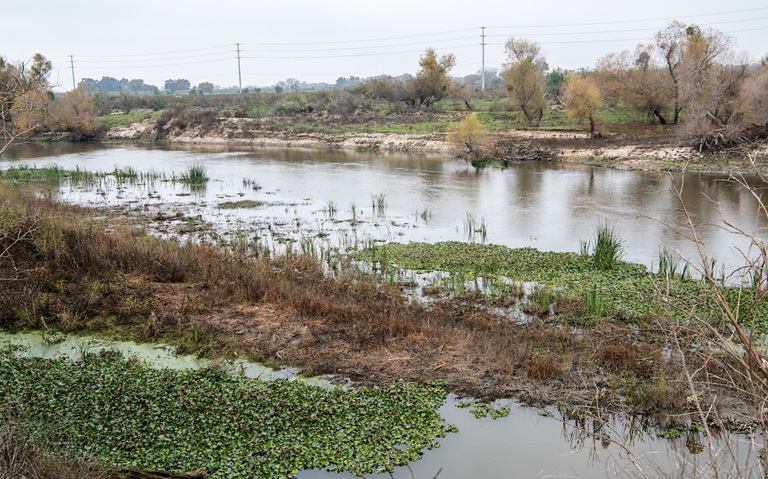
 From the Department of Water Resources:
From the Department of Water Resources:
On a small scale, aquifers — subsurface natural basins — have benefitted from man-made recharge for decades. Now, a new Department of Water Resources (DWR) assessment shows how Flood Managed Aquifer Recharge, or Flood-MAR, can help reduce flood risk and boost groundwater supplies across large areas of land.
A climate change problem solver, Flood-MAR collects high flow flood waters from heavy precipitation or snow melt and conveys it downstream. There, the flood waters are spread across the land, creating wetland habitat or irrigating fields while also percolating to aquifers underground. The capturing of flood waters during times of peak flows lessens the risk of major flooding during heavy storms. Some of the water later makes its way back to waterways where it can also support ecosystems and riverine habitat. In partnership with the Merced Irrigation District, Sustainable Conservation, and others, DWR experts analyzed how this would work in the Merced River —a 145-mile-long tributary of the San Joaquin River. The Merced River, which flows from the Sierra Nevada to the San Joaquin Valley, could be much more vulnerable to heavy flooding as storms intensify.
Click here to read more from the Department of Water Resources.
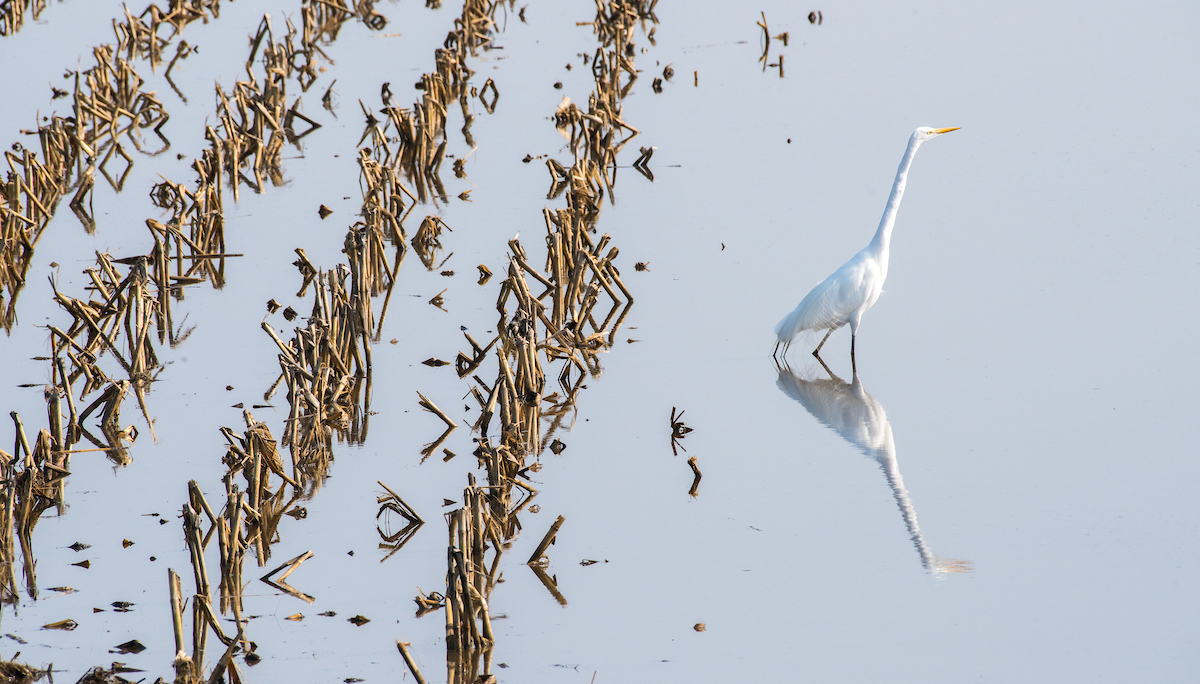
Dr. Graham Fogg and DWR’s Jenny Marr discuss the efforts underway to assess the potential for Flood Managed Aquifer Recharge (or Flood MAR)
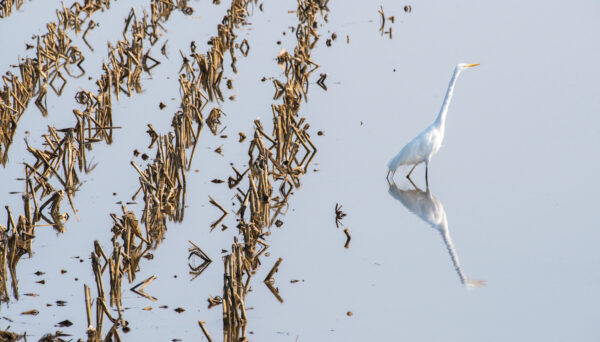
At the April meeting of the California Water Commission, the Commission continued examining the state’s role in conveyance projects by hearing from two experts on flood-managed aquifer recharge, or Flood MAR. First, Dr. Graham Fogg, UC David professor emeritus of Hydrogeology, discussed scaling up Flood MAR and how that will likely present new conveyance needs. Then, Jenny Marr, Supervising Engineer at the Department of Water Resources, outlined the state’s approach to flood Mar.
GRAHAM FOGG: Flood-MAR Perspective: American-Cosumnes Basin Experience
Dr. Graham Fogg’s presentation gave the big picture perspective on Flood MAR and highlighted a case study underway in the American-Cosumnes basin as part of a UC Water initiative since 2014.
He began by pointing out California is not alone in having groundwater problems. Groundwater depletion is a global problem. Depleted aquifers are being increasingly written about all over the world. In some cases, it’s becoming an existential crisis in water security.
Why is that? Dr. Fogg noted that since we’ve been developing groundwater, which has only in the last 50-70 years at high amounts, we’ve concentrated mainly on pumping it.
“Typically, we pump the groundwater and hope for the best,” he said. “The alternative in terms of managing it, now we can pump groundwater, is that we can also do things that increase the groundwater storage; we can replenish the groundwater. So one way to look at it is we’ve worked a lot harder in the last 50 years or so in pumping groundwater than we have in replenishing it.”
Click here to continue reading at Maven’s Notebook.
 “Drought has become an issue in California, and one way to help that are vineyards. California Ag Net explains how researchers are using farmland to recharge groundwater.”
“Drought has become an issue in California, and one way to help that are vineyards. California Ag Net explains how researchers are using farmland to recharge groundwater.”
Watch video segment from RFD TV here: Using vineyards to recharge California’s groundwater
For more on groundwater recharge, visit the groundwater recharge page at the Groundwater Exchange by clicking here.
 Kamyar Guivetchi, Manager of DWR’s Division of Planning has often referred to Flood Managed Aquifer Recharge (or Flood MAR) as a “moon shot” for recharging depleted groundwater basins, but just how much Flood MAR can contribute to groundwater recharge in a watershed is unknown. However, the Department of Water Resources’ Integrated Watershed Management staff is underway with a pilot study to look at the potential for Flood MAR in the Merced River watershed.
Kamyar Guivetchi, Manager of DWR’s Division of Planning has often referred to Flood Managed Aquifer Recharge (or Flood MAR) as a “moon shot” for recharging depleted groundwater basins, but just how much Flood MAR can contribute to groundwater recharge in a watershed is unknown. However, the Department of Water Resources’ Integrated Watershed Management staff is underway with a pilot study to look at the potential for Flood MAR in the Merced River watershed.
At the October meeting of the California Water Commission, Mr. Guivetchi and David Arrate, Senior Water Resources Engineer with the Department of Water Resources, gave a presentation on the study and shared some of the preliminary results.
Click here to read this article from Maven’s Notebook.
 Kamyar Guivetchi is the Manager of DWR’s Division of Planning, where he works with staff, numerous government agencies, California Native American tribes, other stakeholders, and the public to prepare the California Water plan updates. At the UC Davis Groundwater SAS Symposium, Mr. Guivetchi gave a keynote address focusing on the need to build watershed resilience by increasing integration among agencies with responsibilities for water resources. He also touched on the Newsom administration’s water initiatives, the update to the California Water Plan, and Flood-MAR.
Kamyar Guivetchi is the Manager of DWR’s Division of Planning, where he works with staff, numerous government agencies, California Native American tribes, other stakeholders, and the public to prepare the California Water plan updates. At the UC Davis Groundwater SAS Symposium, Mr. Guivetchi gave a keynote address focusing on the need to build watershed resilience by increasing integration among agencies with responsibilities for water resources. He also touched on the Newsom administration’s water initiatives, the update to the California Water Plan, and Flood-MAR.






